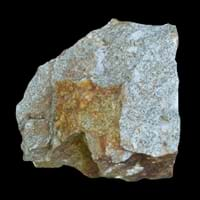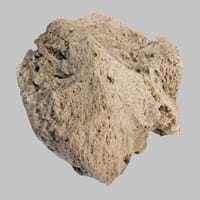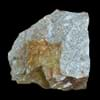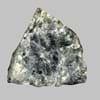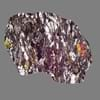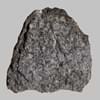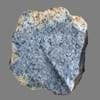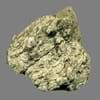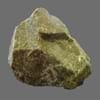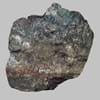Definition
Tonalite is a coarse-grained plutonic rock consisting mainly of sodic plagioclase, quartz, and hornblende or other mafic minerals with phaneritic texture
Pumice is a volcanic rock that consists of highly vesicular rough textured volcanic glass, which may or may not contain crystals
Origin
Tonale, Italy
Spain
Discoverer
Unknown
Unknown
Etymology
From Tonale Pass, northern Italy, + -ite1
From Old French pomis, from a Latin dialect variant of pumex
Class
Igneous Rocks
Igneous Rocks
Sub-Class
Durable Rock, Hard Rock
Durable Rock, Medium Hardness Rock
Other Categories
Coarse Grained Rock, Fine Grained Rock, Medium Grained Rock, Opaque Rock
Fine Grained Rock, Opaque Rock
Texture
Phaneritic
Vesicular
Color
Black, Brown, Light to Dark Grey, White
Beige, Grey, Light Green, Light Grey, Pink, White, Yellow- grey
Durability
Durable
Durable
Scratch Resistant
Yes
Yes
Appearance
Banded and Foilated
Vesicular
Interior Uses
Decorative Aggregates, Entryways, Flooring, Homes, Interior Decoration
Decorative Aggregates, Flooring, Homes, Interior Decoration
Exterior Uses
As Building Stone, As Facing Stone, Paving Stone, Garden Decoration, Office Buildings
As Building Stone, As Facing Stone, Garden Decoration, Paving Stone
Other Architectural Uses
Curbing
Curbing, Powder
Construction Industry
As Dimension Stone, Cement Manufacture, Cobblestones, Construction Aggregate, for Road Aggregate
As Dimension Stone, Cement Manufacture, for Road Aggregate, In landscaping and horticulture, Making natural cement, Production of lightweight concrete blocks
Medical Industry
Not Available
As an abrasive in skin exfoliating products, In Chemical and Pharmaceutical Industry, Medicines and Cosmetics
Antiquity Uses
Artifacts, Sculpture
Artifacts
Commercial Uses
Cemetery Markers, Creating Artwork
As a traction material on snow-covered roads, As an abrasive in pencil erasers, Fine abrasive used for polishing, Manufacture of Soap, Solvents, Dyes, Plastics and Fibres, Used in aquariums
Features
Is one of the oldest rock, Typically speckled black and white.
Host Rock for Lead
Archaeological Significance
Monuments
Not Yet Used
Not Yet Used
Famous Monuments
Not Applicable
Not Applicable
Sculpture
Used
Not Yet Used
Famous Sculptures
Not Available
Not Applicable
Pictographs
Not Used
Used
Petroglyphs
Not Used
Used
Figurines
Used
Not Yet Used
Formation
When alkali feldspar is extracted from granite, it changes to granitoid and later, it becomes tonalite with quartz as major mineral.
Pumice rock forms when the magma cools so quickly that atoms in the melt are not able to arrange themselves into a crystalline structure.
Mineral Content
Albite, Amphibole, Apatite, Biotite, Feldspar, Hornblade, Ilmenite, Magnetite, Manganese Oxides, Olivine, Plagioclase, Pyroxene, Quartz, Sulfides, Titanite, Zircon
Aluminum Oxides, Calcite, Carbonate, Iron Oxides, Silica
Compound Content
NaCl, CaO, MgO, Silicon Dioxide
Al, Aluminium Oxide, CaO, Carbon Dioxide, MgO, Silicon Dioxide
Types of Metamorphism
Burial Metamorphism, Cataclastic Metamorphism, Contact Metamorphism, Hydrothermal Metamorphism, Impact Metamorphism, Regional Metamorphism
Burial Metamorphism, Impact Metamorphism
Types of Weathering
Biological Weathering, Chemical Weathering, Mechanical Weathering
Biological Weathering, Chemical Weathering, Mechanical Weathering
Types of Erosion
Wind Erosion
Chemical Erosion, Coastal Erosion, Glacier Erosion, Sea Erosion, Water Erosion, Wind Erosion
Grain Size
Medium to Fine Coarse Grained
Fine Grained
Fracture
Conchoidal
Planar
Streak
Bluish Black
White, Greenish White or Grey
Porosity
Very Less Porous
Highly Porous
Luster
Subvitreous to Dull
Earthy
Compressive Strength
Not Available
Cleavage
Not Available
Perfect
Specific Gravity
2.86-3
2.86
Transparency
Opaque
Opaque
Density
2.73 g/cm3
0.25-0.3 g/cm3
Resistance
Heat Resistant, Pressure Resistant, Water Resistant
Impact Resistant, Pressure Resistant
Deposits in Eastern Continents
Asia
Not Available
Afghanistan, Indonesia, Japan, Russia
Africa
Egypt
Ethiopia, Kenya, Tanzania
Europe
Finland, Germany, Italy, Romania, Sweden, Turkey
Greece, Hungary, Iceland, Italy, Turkey
Others
Not Available
Not Available
Deposits in Western Continents
North America
USA
Bahamas, Barbados, Canada, Costa Rica, Cuba, Jamaica, Mexico, USA
South America
Argentina, Bolivia, Chile, Colombia, Ecuador, Peru
Argentina, Chile, Ecuador, Peru
Deposits in Oceania Continent
Australia
New Zealand, South Australia, Western Australia
New Zealand, Western Australia
